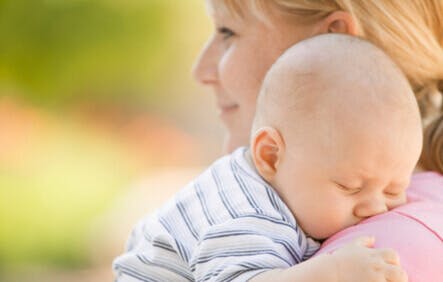Cradle Cap: A-to-Z Guide from Diagnosis to Treatment to Prevention

We are constantly making new skin cells at about the rate that we lose old, dry skin cells. The old skin falls off and we usually don’t even notice the process. In many healthy infants, the skin cells on their scalp grow faster than they can fall off, leaving a layer of somewhat crusty, extra skin known as cradle cap.
What is it?
Cradle cap is a crusting and scaling rash found on the scalps of many healthy babies. The sebaceous glands in their skin are hyperactivated often because of mom’s hormones that crossed the placenta just before birth. These glands pump out a greasy substance that keeps the old skin cells attached as it dries.
Cradle cap is a specific timing and location of seborrhea.
Who gets it?
Cradle cap can occur in any baby, and most commonly begins sometime in the first 3 months.
It is not common after the first year of life until the teen years, when hormone levels rise and exuberant growth returns. Teens often have a similar scalp condition, but for them we call it seborrhea (though I think “cradle cap” when I see it, remembering how far they have come).
What are the symptoms?
Your adorable baby develops patchy scales and redness on the scalp, even though the early baby pictures showed beautiful baby skin. The scales may appear cracked, greasy, or even weeping.
The same rash is often prominent around the ear or the eyebrows. It may appear in other locations as well, where it is called seborrheic dermatitis rather than cradle cap.
Is it contagious?
No
How long does it last?
In most children, cradle cap is gone by 8 to 12 months and often long before that.
How is it diagnosed?
Cradle cap is diagnosed by physical examination. If it has not improved with simple treatment, other diagnoses should be considered and other tests may be necessary.
How is it treated?
Generally, cradle cap does not need to be treated as long as it doesn’t bother you or the baby. Sometimes it itches.
The gentlest treatment is to simply rub a small amount of baby oil onto your baby’s scalp. Avoid using vegetable or olive oil since a yeast named Malassezia thrives on plant-based oils, worsening the problem instead of treating it. (Arch Pediatr Adolesc Med. 2012;166(10):967)
If the cradle cap is especially pronounced, or if your baby is over six months old, you could also wash the hair with a seborrhea shampoo, such as those containing selenium, salicylic acid, or tar. These shampoos don’t have the “no tears” factor, so be careful or your child may not like bath time as much as he or she usually does.
If the cradle cap is especially reddened or inflamed, a small amount of over-the-counter cortisone cream may help.
These measures may be needed, off and on, until your baby outgrows the condition. Nevertheless, if the cradle cap does not respond rapidly to these treatments, be sure to inform your pediatrician.
How can it be prevented?
Preventing the rapid scalp growth and active sebaceous glands of cradle cap is not easy (or desirable). Frequent gentle shampooing may prevent the build up of scales.


